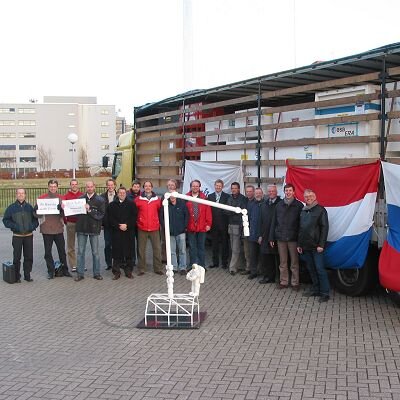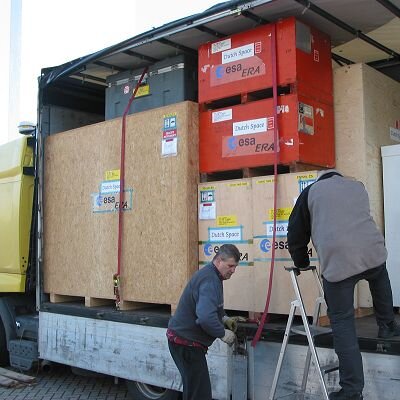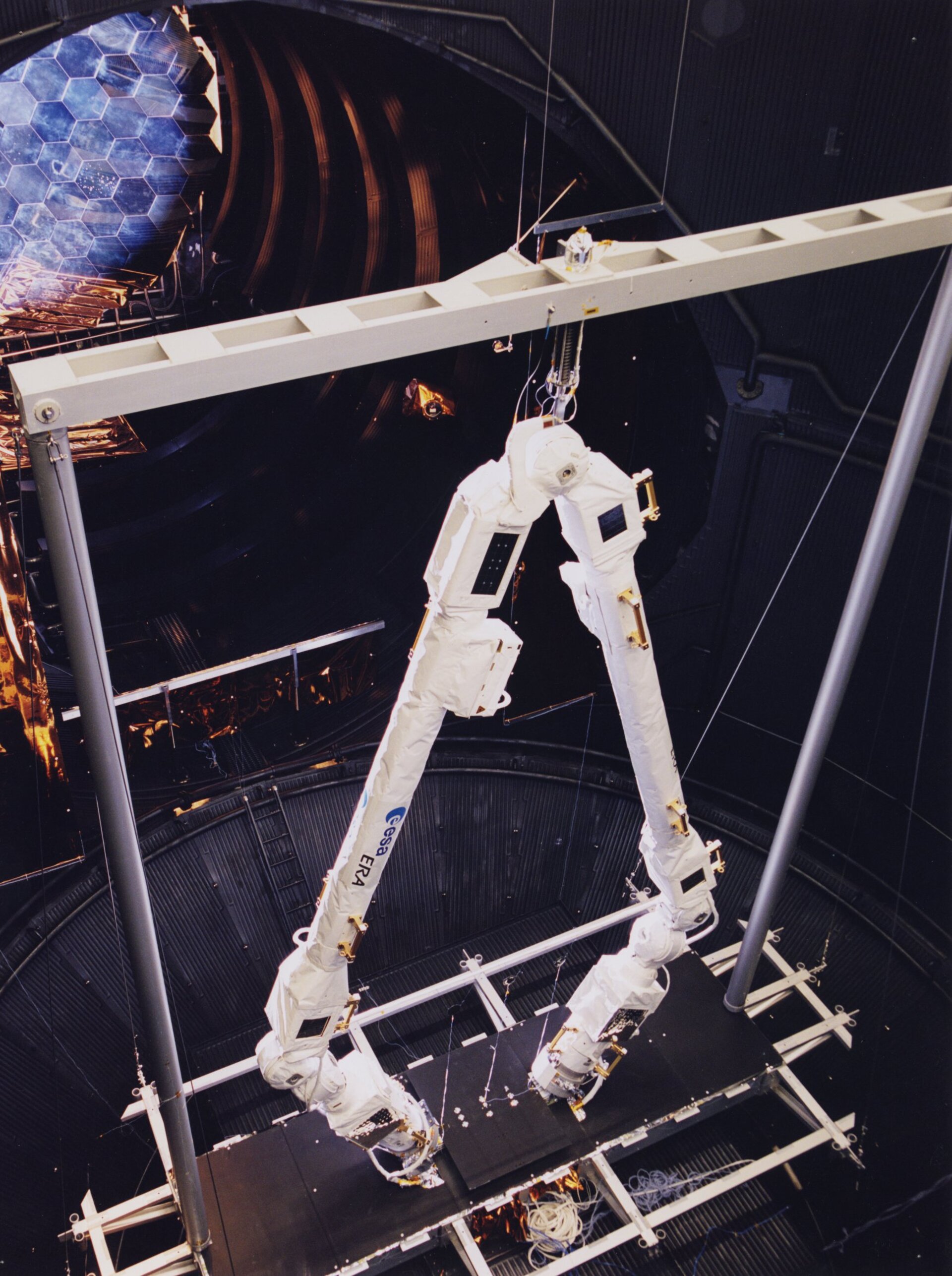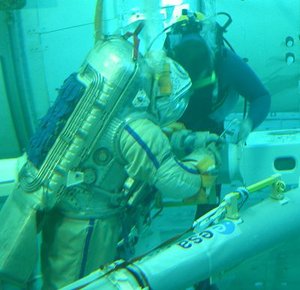Step forward for ERA as training equipment arrives in Russia
A milestone for the European Robotic Arm (ERA) has been completed with the arrival of important training equipment at the premises of the company RSC Energia in Moscow, and at the Gagarin Cosmonaut Training Centre (Tsentr Podgotovka Kosmonavtov - TsPK) at Star City near Moscow.
This equipment, the Mission Preparation and Training Equipment for the European Robotic Arm, will be used as a key element for training Russian cosmonauts, astronauts of the other ISS partner agencies and Russian flight controllers in their work with ERA.
The European Robotic Arm is scheduled to arrive at the International Space Station in November 2007. It is a cooperative project between the European Space Agency and the Russian Federal Space Agency Roscosmos. Once it arrives at the ISS the 11-metre long arm will be able to transport up to 8000 kg of equipment or experimental payloads to different locations around the outside of the Russian segment of the International Space Station. It will also make it possible to move astronauts like a crane around the outside of the ISS for carrying out extravehicular (EVA) tasks, commonly called 'spacewalks’. By carrying out certain tasks done by astronauts it will also have the effect of reducing overall EVA time.

Two sets of ERA training equipment started their overland journey by truck on 9 February in Leiden, the Netherlands, where Dutch Space, ESA's prime contractor for the European Robotic Arm, is located. Dutch Space developed the Mission Preparation and Training Equipment along with the Dutch National Aerospace Laboratory (NLR) in Marknesse, in the Netherlands, and the Belgian company Spacebel Informatique near Brussels, Belgium. The equipment was thermally protected during its five-day journey via Finland to Russia in order to cope with the temperatures en route, which can drop down to -30 °C.
One set of training equipment was shipped to RSC Energia, the Russian Federal Space Agency’s industrial partner for the European Robotic Arm. This set will be used for mission preparation purposes and part of it goes to the Russian Mission Control Centre for the ISS (Tsentr Upravleniya Pilotami - TsUP) in Moscow, where it will be used for mission monitoring purposes. The second set, shipped to the Gagarin Cosmonaut Training Centre in Star City near Moscow, will be used for astronaut mission training. A further set of equipment remains at ESA's research and technology centre, ESTEC, in Noordwijk, the Netherlands.
The Mission Preparation and Training Equipment acts as a simulation of the European Robotic Arm in orbit for astronauts, and from the ground for flight controllers. It consists of a virtual reality system composed of a Silicon Graphics computer with several workstations and smaller computers, and the ERA Man/Machine Interfaces. The Man/Machine Interfaces are the direct interfaces that astronauts use for controlling the European Robotic Arm on orbit.

Now that the equipment has arrived at its various locations, it will be installed and immediately put to use for training purposes. For the first couple of months the equipment will be used to train local personnel in its use. Crew training will start in September.
The European Robotic Arm is due to be launched to the International Space Station (ISS) on a Russian Proton rocket from Baikonur in November 2007. It will be launched together with the Russian Multipurpose Laboratory Module on which it will be attached for its journey to the ISS. Once attached to the ISS the MLM will act as the homebase of ERA.
Among the various elements for the ISS that ESA has developed on the basis of bilateral cooperation agreements with Russia, ERA is the one which today looks back on the longest history of cooperation. It was initially designed for the planned European spaceplane Hermes as the 'Hermes Robotic Arm' (HERA). One of the secondary missions envisaged by Europe for Hermes as early as in the late 1980s was to visit the future space station Mir 2, then planned by the Soviet Union.
When Hermes was abandoned and the Russian Federation created, ESA discussed with Russian counterparts the possibility to turn HERA into ERA and use it as a European element on Mir 2. Later, when Russia accepted the invitation made by the USA, Europe, Canada and Japan to join the International Space Station programme with the elements so far designed and developed for Mir 2, ERA became an element of the Russian segment of the ISS, under the legal framework of a direct bilateral agreement between ESA and Russian authorities.
For further information, please contact:
Dieter Isakeit
Head, Erasmus User Centre and Communication Office
Directorate of Human Spaceflight, Microgravity and Exploration
Noordwijk (the Netherlands)
Tel: +31 71 565 5451
Fax: +31 71 565 8008
Philippe Schoonejans
Head of the ERA Project Office (ERA Project Manager)
Directorate of Human Spaceflight, Microgravity and Exploration
Noordwijk (the Netherlands)
Tel: +31 71 565 5026
Fax: +31 71 565 4437






